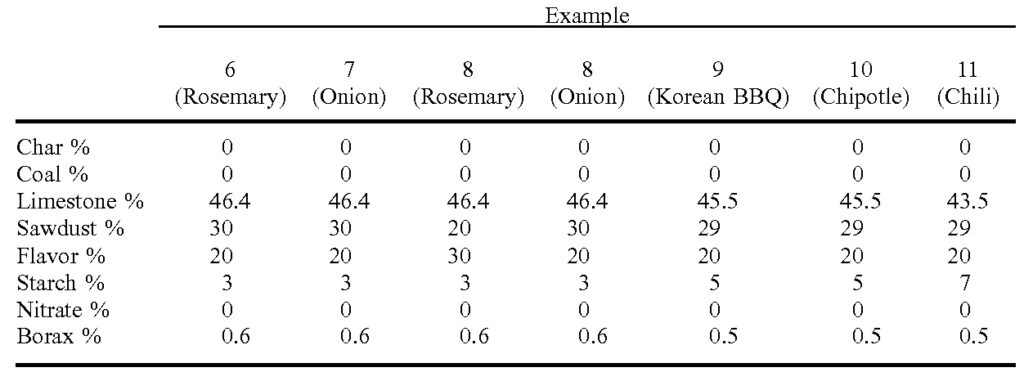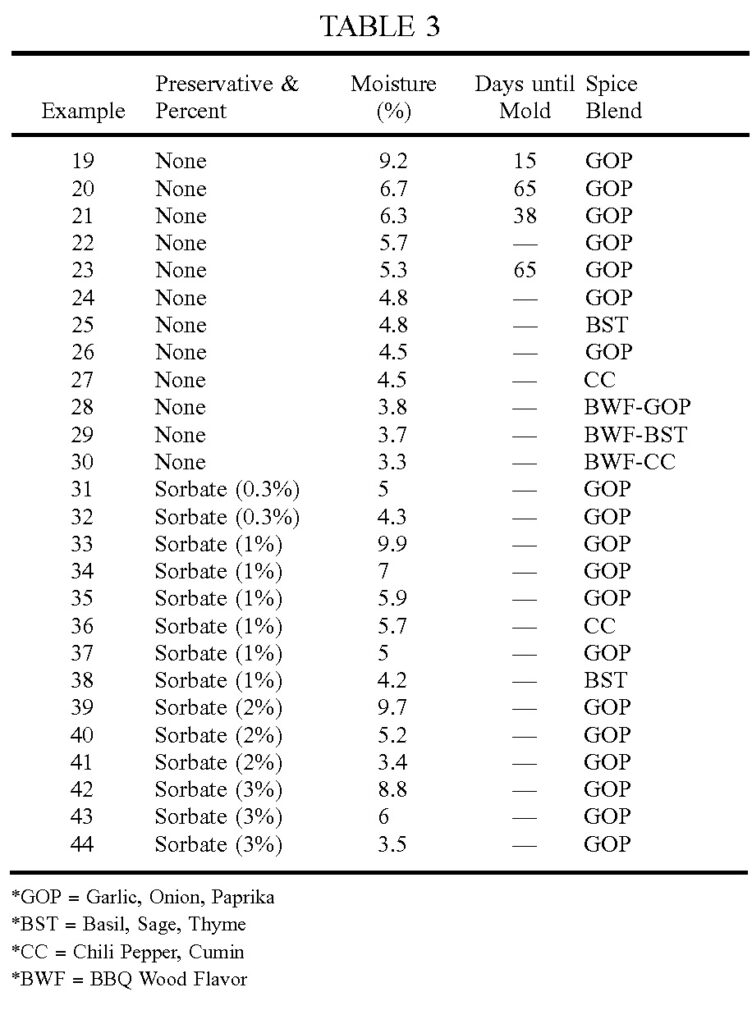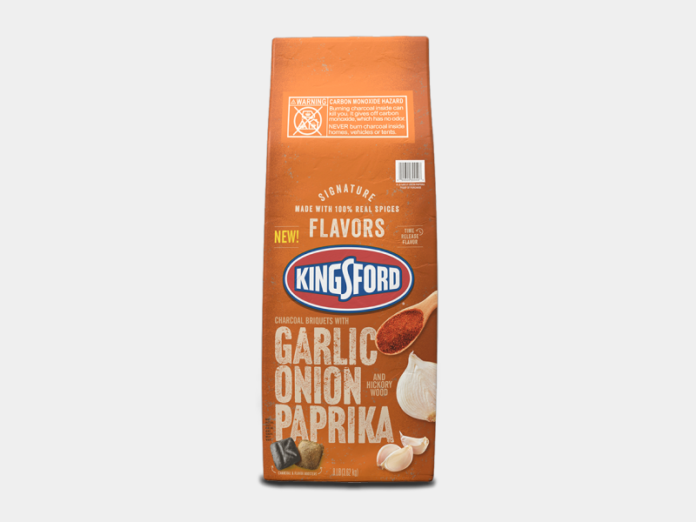With new charcoal companies on the market and others expanding production, Kingsford is trying to stay at the head of the pack through releasing innovative products. Earlier this year they went to market with flavored charcoal called Kingsford Signature Flavors. It offers flavors such as garlic onion and chili pepper to add aroma and flavor to your cook.
By looking Kingsford’s patent on Flavor Briquettes, we can see the different methods they tried when creating Signature Flavors.
Kingsford tried different methods of adding flavor, but seemed to have the most success with having a mixture of traditional fuel briquettes with flavor briquettes. In the patent they tested it at a 4:1 ratio of fuel to flavor briquettes. When they tried having all of the briquettes having some spice on them, rather than the mixture, the pile temperature burned too hot to enhance flavor.
Central to effectively producing flavor and/or aroma with flavor briquettes, is they need to smolder at a lower temperature than traditional fuel briquettes. One way that Kingsford tested to achieve this is through adding higher quantities of limestone, which has been used previously as a whiteness enhancer.
They also, interestingly enough, seemed to have the most success with flavor briquettes having neither char nor coal in it. This means that technically a flavor briquette may be called “charcoal”, but it isn’t charcoal.
While we don’t know from the patent what the final material composition of the flavor briquettes is, below shows some examples that they tested.

It’s worth noting from the table that Borax isn’t an additive in the briquettes, it’s used to help get them out of the roll press when their manufactured. It’s almost like a non-stick coating in cooking.
One other challenge that Kingsford faced with developing their Signature Flavors was mold growth. The flavor briquettes have both sawdust and a food seasoning, which can retain moisture. As we all know moisture on food products leads to mold.
To combat this, they tried two different methods of delaying or eliminating mold growth. The first was drying the briquettes during manufacturing and the second was adding a food preservative, such as potassium sorbate.
To test them for mold growth, all briquettes were stored at 80% humidity and at 80 degrees F. That temperature and humidity are higher than the most humid city in the U.S., New Orleans.
Below shows the outcomes of their testing with adjustments in the amount of preservative and moisture content.

After they developed the ideal material composition of the flavor briquettes, with the ideal moisture content, Kingsford Signature Flavors was born. It’s interesting to see behind the curtain of how products like this are developed and come to market.
